Thailand Oral Antidiabetic Drug Market Size
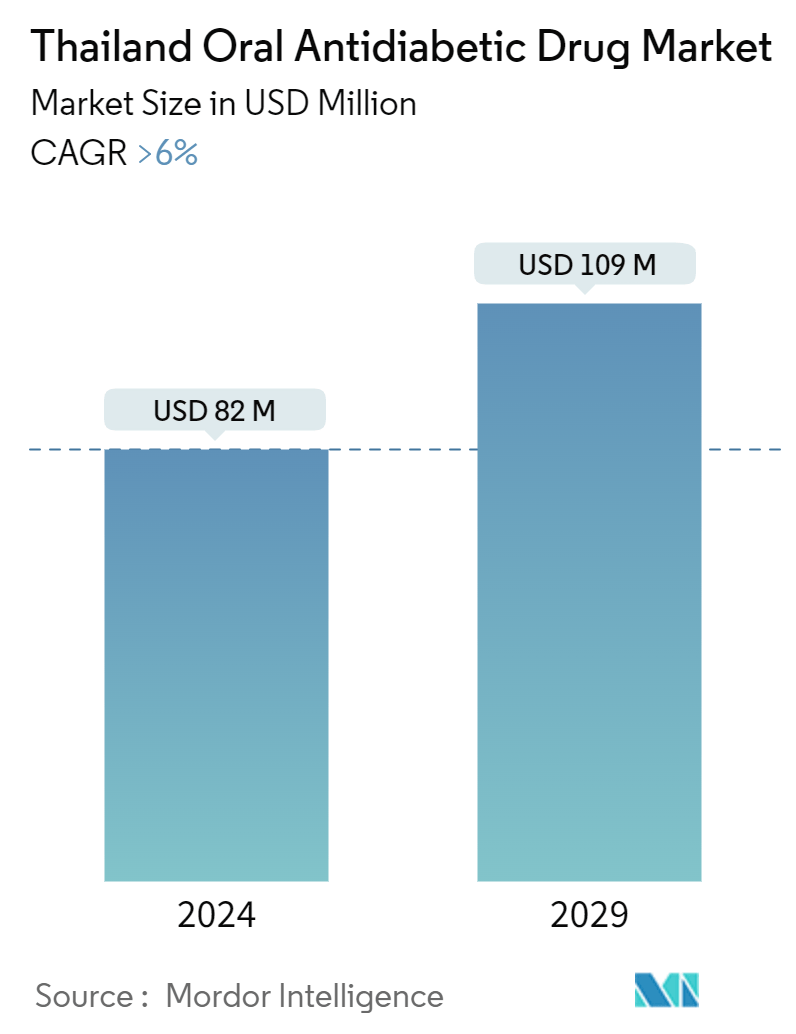
| Study Period | 2019 - 2029 |
| Base Year For Estimation | 2023 |
| Forecast Data Period | 2024 - 2029 |
| Market Size (2024) | USD 82 Million |
| Market Size (2029) | USD 109 Million |
| CAGR (2024 - 2029) | > 6.00 % |
Major Players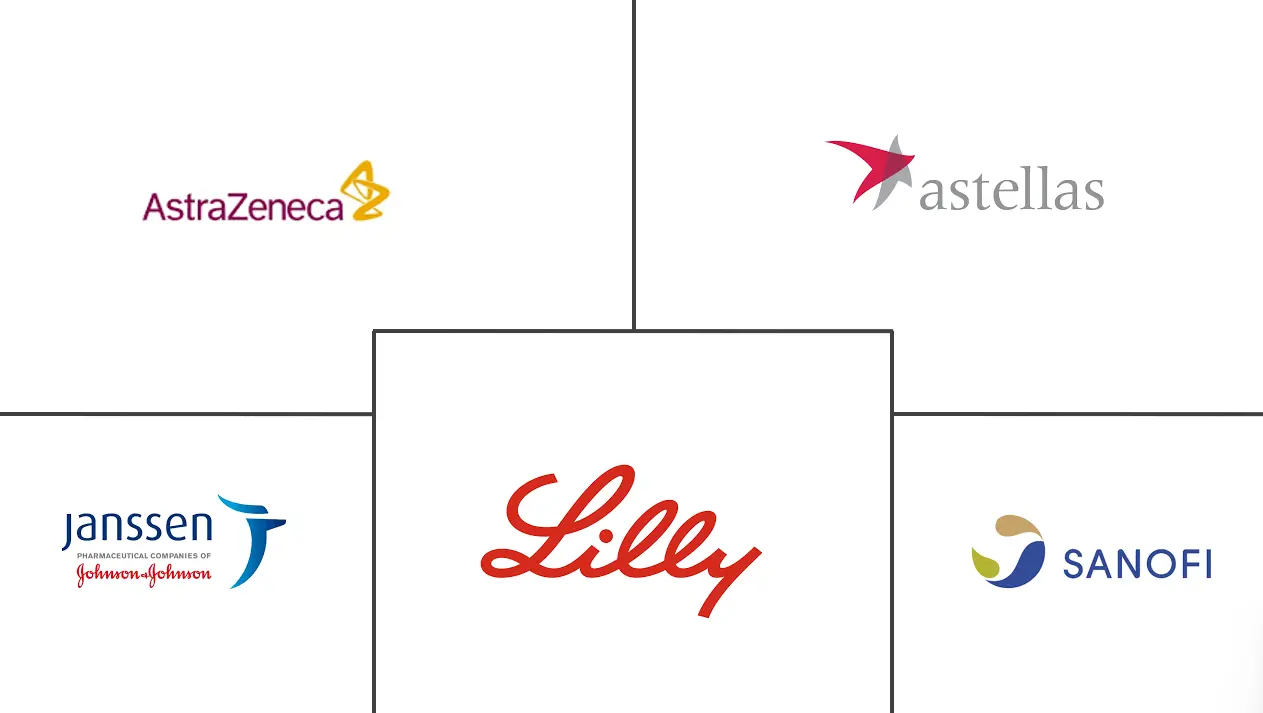
*Disclaimer: Major Players sorted in no particular order |
Need a report that reflects how COVID-19 has impacted this market and its growth?
Thailand Oral Antidiabetic Drug Market Analysis
The Thailand Oral Antidiabetic Drug Market size is estimated at USD 82 million in 2024, and is expected to reach USD 109 million by 2029, growing at a CAGR of greater than 6% during the forecast period (2024-2029).
Thailand's Oral Anti-Diabetic Drug Market is expected to register a CAGR of more than 6% during the forecast period and 68 million in revenue in the current year.
Throughout each stage of the fast COVID-19 infection, the healthcare system experienced substantial disruption and strain. Some nations, most notably the Thai government, have implemented home isolation or a home quarantine program to prevent the healthcare system's collapse and address insufficient healthcare resources. The number of COVID-19 disease cases in Thailand grew to between 20,000 and 25,000 cases per day between July 2021 and October 2021, making it challenging for hospitals to manage COVID-19 infections. Previous studies demonstrated the efficacy of a COVID-19 home monitoring program utilizing telemedicine to close the treatment gap amid a global lack of healthcare workers. These programs mainly monitored the symptoms' severity and advised individuals to get more therapy if necessary. Hospital capacity was limited during COVID-19, and there was home isolation. The results in home-isolated patients with COVID-19 infection with the introduction of diabetes self-management education and support (DSMES) and glycemic treatment via telemedicine by the Thai government. The National Research Council of Thailand (NRCT) unveiled a prototype breathalyzer in AUG 2022 with a 97% accuracy rate for detecting COVID-19 infection.
A series of metabolic illnesses known as diabetes or diabetes mellitus is characterized by a person having a high blood sugar level. Diabetes is characterized by either insufficient insulin production, improper cell response to insulin, or both. The insulin medication category holds a substantial market share. Insulin is used by more than 100 million individuals globally, including 100% of those with Type 1 diabetes and 10% to 25% of those with Type 2 diabetes. Only a few insulin producers are operating on the market, and insulin production is complex. Because of this, there is tremendous competition among these companies, which always work to meet patients' needs by offering the best insulin possible.
Thailand Oral Antidiabetic Drug Market Trends
Sulfonylureas Segment Occupied the Highest Market Share in the Thailand Oral Anti-Diabetic Drugs Market in the current year.
Regarding revenue, the Sulfonylureas segment is anticipated to lead the Thailand Oral Anti-Diabetic Drugs Market and post a CAGR of over 1% during the forecast year.
Controlling blood pressure is an essential part of managing diabetes. Furthermore, to prevent renal and heart-related issues in patients with diabetes, even in the absence of high blood pressure, certain blood pressure-lowering drugs are commonly advised. Currently, no solid scientific proof connects these blood pressure medications to the chance of COVID-19 infection or its repercussions. To decrease the likelihood of long-term problems, increase QALY, and prolong life in type 2 diabetes patients who had previously had unsuccessful results with a sulfonylurea or metformin therapy. Although the greater cost in the pioglitazone group is mostly attributable to the drug cost, the therapeutic advantages of pioglitazone over rosiglitazone are primarily attributable to the superior lipid profile and glycemic control.
The most effective hypoglycaemic drug for treating diabetes is insulin therapy; however, if insulin is kept improperly, its effectiveness will degrade. Diabetes and other NCDs account for over 70% of all fatalities in Thailand. Being overweight raises the risk of type 2 diabetes by three times, while being obese increases the risk by nearly seven times.
Because of the country's robust primary healthcare system and universal health coverage, T2DM medical treatment is readily accessible. Less than half of diabetes patients in Thailand, according to surveys, have adequate management of clinical risk factors for the condition. Of these patients, 33% have ideal HbA1C levels, 44% have suitable LDL cholesterol levels, and 52% have adequate blood pressure control. Less than 60% of diabetic patients in Thailand receive thorough yearly screening; regular follow-up and screening for microvascular problems are also uncommon. The proper self-management of the condition is also necessary for T2DM control and preventing its consequences, in addition to access to and use of facility-based treatments. Evidence from Thailand suggests that having a multidisciplinary team to deliver holistic care for patients with diabetes may have advantages beyond just maintaining medication compliance.
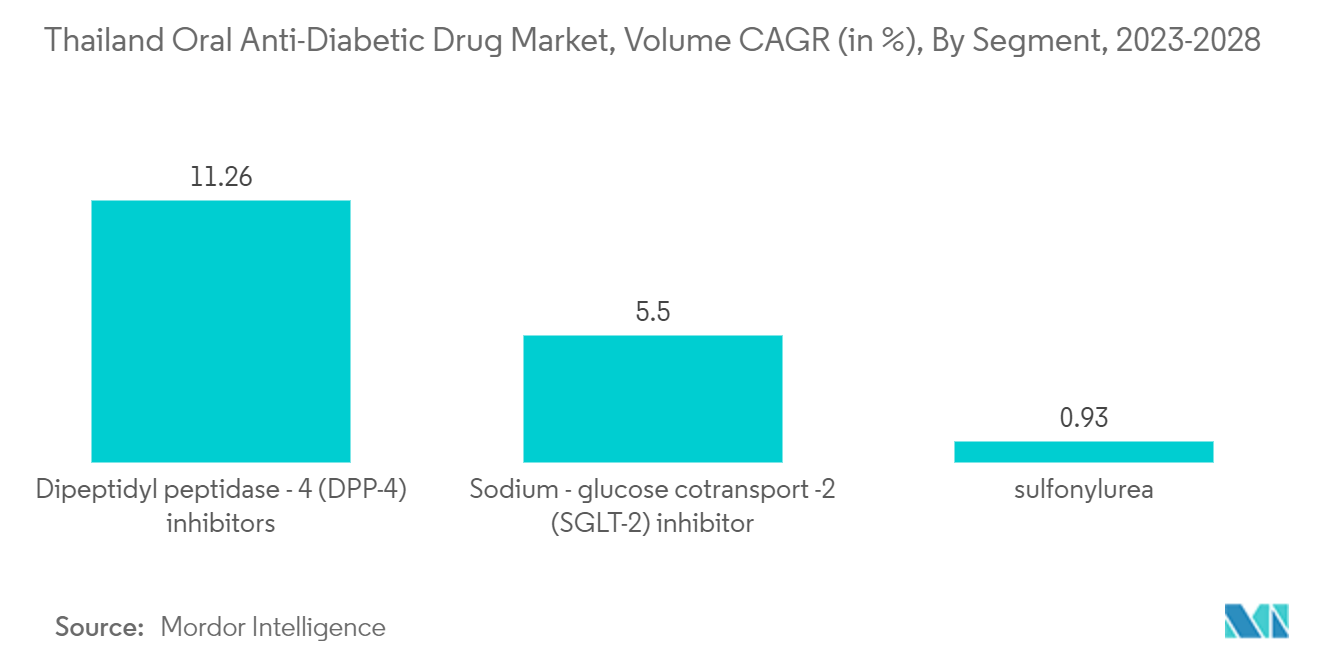
The increasing diabetes population in Thailand is driving the market.
With a frequency of 9.9% in the adult population, Thailand has the seventh-largest number of diabetes patients in the Western Pacific. In Thailand, diabetes is one of the main causes of mortality. About 30,000 (or 15%) of Thailand's yearly fatalities from chronic non-communicable illnesses are brought on by diabetes. High blood sugar levels (hyperglycemia) are a symptom of diabetes mellitus, which a shortage of insulin hormones can bring on, a problem with insulin production, or both. Long-term high blood sugar levels can cause essential organs to malfunction, deteriorate, and be destroyed. Both changeable and immutable variables can contribute to an inability to manage blood sugar levels. Gender, age, the length of diabetes, microvascular and macrovascular complications, and comorbidities are non-modifiable variables. Behavioral and/or psychosocial problems, such as poor eating habits, inactivity, obesity, and failure to take prescribed medications as directed by a doctor, as well as stress, depression, and anxiety, particularly anxiety related to diabetes, are examples of modifiable factors.
The majority of doctors are aware that emotional distress is prevalent in their diabetic patients and that it negatively affects diabetes outcomes; nevertheless, many clinicians don't feel equipped to handle this distress. However, emotional issues have a negative impact on one's health in the form of poor self-care habits, poor metabolic results, morbidity, mortality, functional limits, and a decreased quality of life. These harmful outcomes are not just restricted to psychiatric diseases that can be diagnosed. Therefore, even if diabetic self-care is sufficient, treating these emotional issues is essential for a successful healthcare intervention. Diabetes-related Distress (DRD) screening is a crucial initial step in the treatment of mental health issues in T2DM patients as a result. Few investigations on the prevalence of DRD and its risk factors have been conducted in Thailand. Few research on the incidence of DRD and variables linked to DRD in T2DM have been conducted in Thailand. This study examined the prevalence and risk factors for DRD in people with type 2 diabetes.
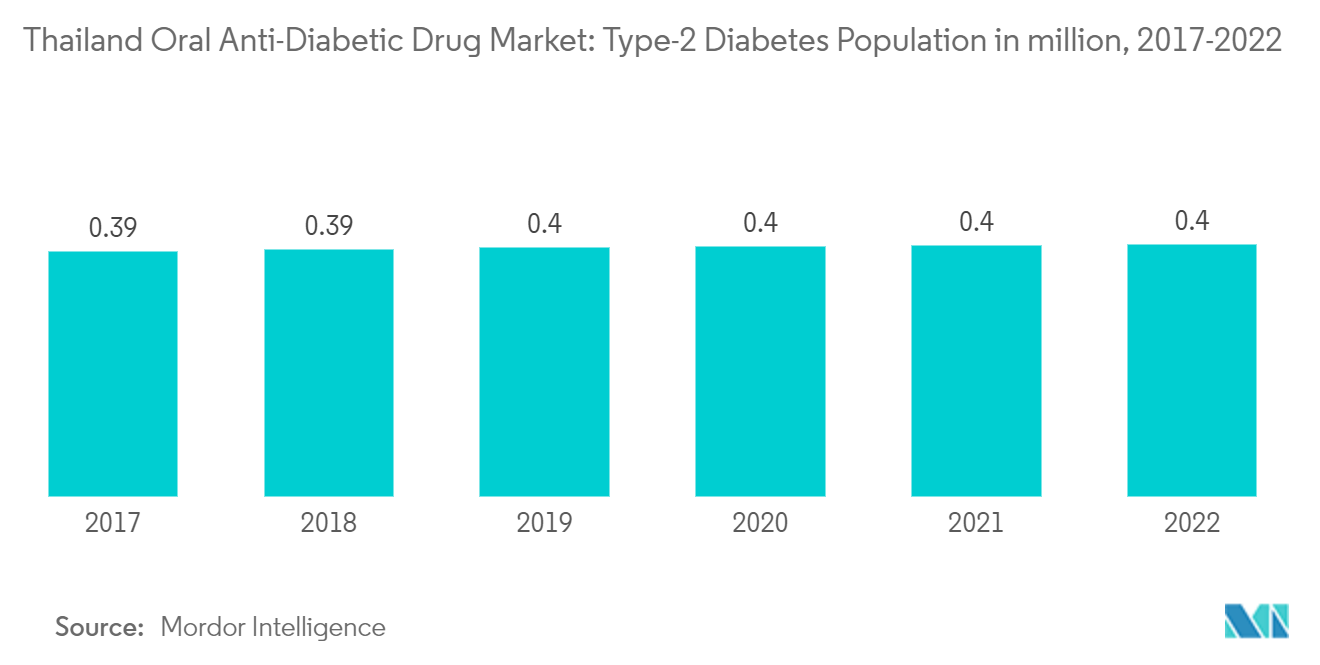
Thailand Oral Antidiabetic Drug Industry Overview
The Thailand Oral Anti-diabetic Drug Market is consolidated, with a few major manufacturers like Eli Lilly, AstraZeneca, Sanofi, and Janssen Pharmaceuticals having a global market presence. In contrast, the remaining manufacturers are confined to the other local or regional markets. Companies are focusing on innovations in diabetes drugs.
Thailand Oral Antidiabetic Drug Market Leaders
Astrazeneca
Astellas
Janssen
Eli Lilly
Sanofi
*Disclaimer: Major Players sorted in no particular order
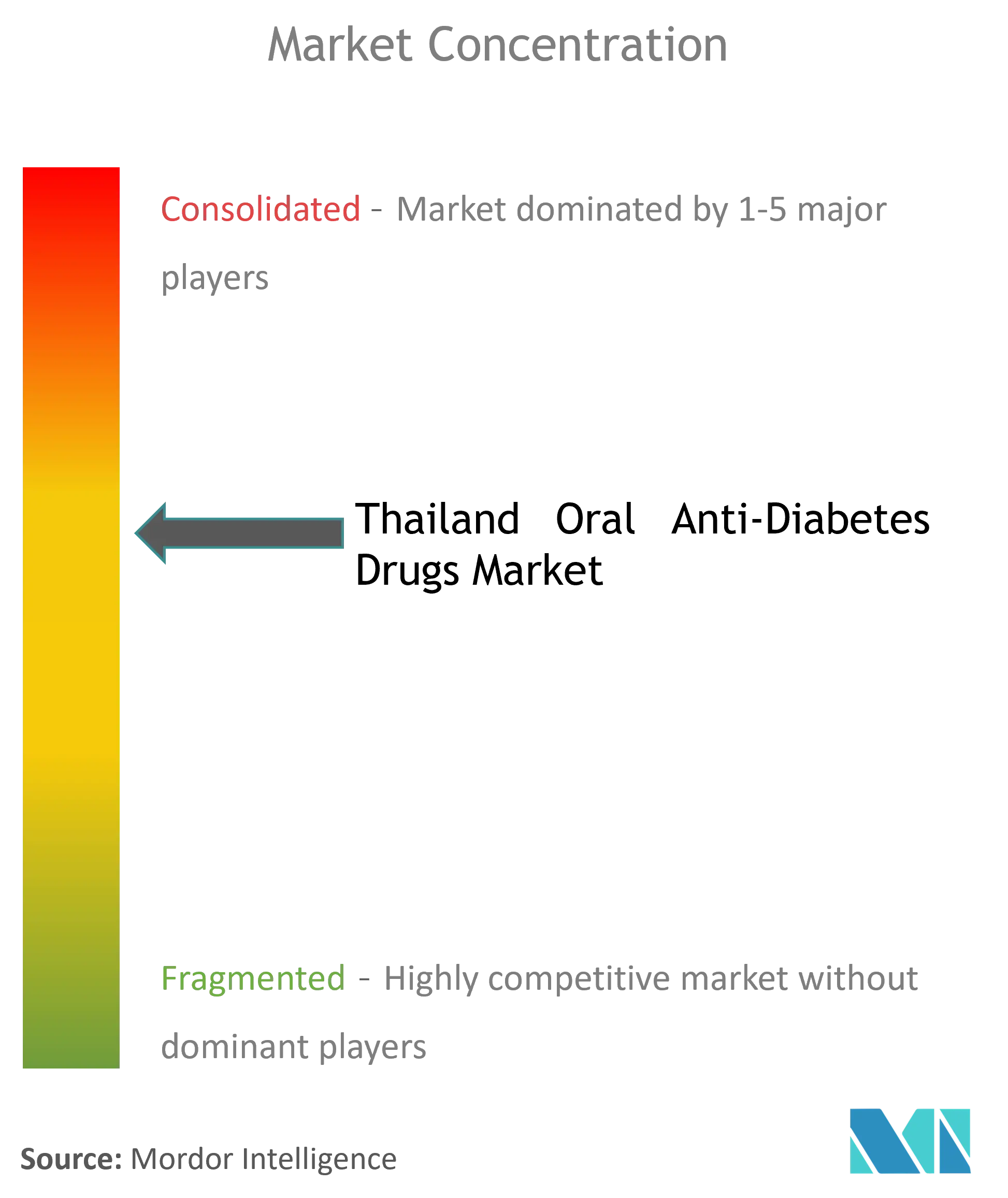
Thailand Oral Antidiabetic Drug Market News
- March 2023: Daewoong Pharmaceutical's Envlo to enter the global market in full swing with filing for product licenses in three ASEAN countries. Submitted an NDA to Indonesia, Philippines, and Thailand.
- May 2022: Mounjaro (tirzepatide) injection to improve blood sugar control in adults with type 2 diabetes was approved as an addition to diet and exercise. Mounjaro was effective at improving blood sugar and was more effective than the other diabetes therapies with which it was compared in clinical studies.
Thailand Oral Antidiabetic Drug Market Report - Table of Contents
1. INTRODUCTION
1.1 Study Assumptions and Market Definition
1.2 Scope of the Study
2. RESEARCH METHODOLOGY
3. EXECUTIVE SUMMARY
4. MARKET DYNAMICS
4.1 Market Overview
4.2 Market Drivers
4.3 Market Restraints
4.4 Porter's Five Forces Analysis
4.4.1 Bargaining Power of Suppliers
4.4.2 Bargaining Power of Consumers
4.4.3 Threat of New Entrants
4.4.4 Threat of Substitute Products and Services
4.4.5 Intensity of Competitive Rivalry
5. MARKET SEGMENTATION
5.1 Oral Anti-diabetic drugs
5.1.1 Biguanides
5.1.1.1 Metformin
5.1.2 Alpha-Glucosidase Inhibitors
5.1.2.1 Alpha-Glucosidase Inhibitors
5.1.3 Dopamine D2 receptor agonist
5.1.3.1 Bromocriptin
5.1.4 SGLT-2 inhibitors
5.1.4.1 Invokana (Canagliflozin)
5.1.4.2 Jardiance (Empagliflozin)
5.1.4.3 Farxiga/Forxiga (Dapagliflozin)
5.1.4.4 Suglat (Ipragliflozin)
5.1.5 DPP-4 inhibitors
5.1.5.1 Onglyza (Saxagliptin)
5.1.5.2 Tradjenta (Linagliptin)
5.1.5.3 Vipidia/Nesina(Alogliptin)
5.1.5.4 Galvus (Vildagliptin)
5.1.6 Sulfonylureas
5.1.6.1 Sulfonylureas
5.1.7 Meglitinides
5.1.7.1 Meglitinides
6. MARKET INDICATORS
6.1 Type-1 Diabetic Population
6.2 Type-2 Diabetic Population
7. COMPETITIVE LANDSCAPE
7.1 COMPANY PROFILES
7.1.1 Takeda
7.1.2 Novo Nordisk
7.1.3 Pfizer
7.1.4 Eli Lilly
7.1.5 Janssen Pharmaceuticals
7.1.6 Astellas
7.1.7 Boehringer Ingelheim
7.1.8 Merck And Co.
7.1.9 AstraZeneca
7.1.10 Bristol Myers Squibb
7.1.11 Novartis
7.1.12 Sanofi
- *List Not Exhaustive
8. MARKET OPPORTUNITIES AND FUTURE TRENDS
Thailand Oral Antidiabetic Drug Industry Segmentation
Orally administered antihyperglycemic drugs reduce blood glucose levels. They are often used in type 2 diabetes care. The Thailand Oral Anti-Diabetic Drug Market is segmented into drugs (Biguanides, Alpha-glucosidase inhibitors, Dopamine-D2 receptor agonists, Sodium-glucose Cotransport-2 (SGLT-2) inhibitor, Dipeptidyl Peptidase-4 (DPP-4) Inhibitors, Sulfonylureas, and Meglitinides). The report offers the market size in value terms in USD for all the abovementioned segments.
| Oral Anti-diabetic drugs | ||||||
| ||||||
| ||||||
| ||||||
| ||||||
| ||||||
| ||||||
|
Thailand Oral Antidiabetic Drug Market Research Faqs
How big is the Thailand Oral Antidiabetic Drug Market?
The Thailand Oral Antidiabetic Drug Market size is expected to reach USD 82 million in 2024 and grow at a CAGR of greater than 6% to reach USD 109 million by 2029.
What is the current Thailand Oral Antidiabetic Drug Market size?
In 2024, the Thailand Oral Antidiabetic Drug Market size is expected to reach USD 82 million.
Who are the key players in Thailand Oral Antidiabetic Drug Market?
Astrazeneca, Astellas, Janssen, Eli Lilly and Sanofi are the major companies operating in the Thailand Oral Antidiabetic Drug Market.
What years does this Thailand Oral Antidiabetic Drug Market cover, and what was the market size in 2023?
In 2023, the Thailand Oral Antidiabetic Drug Market size was estimated at USD 77.08 million. The report covers the Thailand Oral Antidiabetic Drug Market historical market size for years: 2019, 2020, 2021, 2022 and 2023. The report also forecasts the Thailand Oral Antidiabetic Drug Market size for years: 2024, 2025, 2026, 2027, 2028 and 2029.
Thailand Oral Antidiabetic Drug Industry Report
Statistics for the 2024 Thailand Oral Antidiabetic Drug market share, size and revenue growth rate, created by Mordor Intelligence™ Industry Reports. Thailand Oral Antidiabetic Drug analysis includes a market forecast outlook to for 2024 to 2029 and historical overview. Get a sample of this industry analysis as a free report PDF download.
